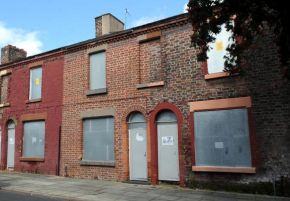George Monbiot wrote an intruiging article in the Guardian last week claiming that underoccupation was the big housing problem that really needed to be resolved. The Guardian have been good enough to publish my response today. Here it is in full:
George Monbiot describes under-occupation of housing as our second housing crisis, after the shortfall in supply, and calls for a fight “It needs to be researched, debated, fought over. It needs to turn political” he says. (let’s take the housing fight to owners with empty spare rooms – Guardian 4th January) his idea might fit with an ideology that it’s all the middle class’s fault, but the real opportunities for better use of housing lie in using empty buildings not spare rooms.
Monbiot’s contention is that “ a better distribution of housing we have already built” could help ease the housing crisis. He goes on to explain that the reason you’ve never heard about this before is a political conspiracy to keep it from us. “You’ll seldom hear a squeak about it in the press, in parliament, in government departments or even in the voluntary sector. Given its political sensitivity, perhaps that’s not surprising” he says.
But in all this talk of wasted space Monbit fails to mention that across the UK there are close to a million empty homes, and enough abandoned commercial buildings that could be readily converted into half a million new dwellings. In our view these have far greater potential to create homes than filling up spare rooms in under-occupied homes. There is detailed evidence to show that numbers of empty homes have increased over recent years. Under-occupation has too, but not to the extent Monbiot claims. Relying on one figure in a report on energy use, Monbiot says that “between 2003 and 2008 there was a 45% increase in the number of under-occupied homes in England” But the English House Condition Survey (p16) shows an increase from 31% in 1995/6 to 37% in 2008/9.
Of the UK’s million empty homes, about half are long-term vacant with no plans for reoccupation. Amazingly thousands of them are boarded up in preparation for demolition with no replacements planned. We think that small incentives for renovation and reoccupation, and a reversal of some of the demolition programmes are the most cost effective way of providing new housing. Surveys have shown that on average, empty homes need only £10,000 of investment to get them occupied again, compared to £90,000 of subsidy to get a new social home built. It’s greener too. Research we carried out recently showed that the refurbishment of derelict buildings creates far lower carbon emissions than building new homes.
But the main reason we should concentrate our energy on getting empty buildings and not empty rooms into use is that empty homes are tangible and there is track record in creating homes from them. Dealing with under-occupation is a naked promise.
Neither the problem, nor the outcome of tackling it, are as great as they first appear. Underocuupation is calculated using the government’s “bedroom standard” this notionally “allocates” bedrooms to people in each household. Couples and single people over 21 get a bedroom; younger people notionally share two to a room. If after this hypothetical family rearranging, there are two or more bedrooms left the home is deemed to be under-occupied. So a family of four living in a four-bedroom house would be under-occupying, even if it consisted of a couple sharing a bedroom and two children each with their own bedroom plus a spare bedroom.
To most people living in this situation I doubt it feels like a problem that needs fixing. And it is hard to think of a policy, short of coercion, that would persuade them to take in lodgers. Living next to an empty home on the other hand is a different matter. Unmanaged and often out of control they can quickly become magnets for fly tipping, vandalism and occasionally arson. In some areas of the country vacancy has become a vicious circle causing neighbourhoods to empty out as they decline.
So investment in bringing empty homes into use is not only a very cost effective way of creating more homes, it helps regenerate neighbourhoods too. We are pleased to see that the government has made some funding available, and is considering giving incentives to communities for bringing homes back into use. However the funding is only enough to refurbish three thousand empty homes nationally. To really create a flow of new homes it needs to be aligned to incentives for owners such as targeted reductions in VAT on refurbishment costs and an end to the barmy idea of giving council tax discounts for houses left empty. With these changes not only would many owners bring their empty homes into use, the rationale for demolishing empty houses would be replaced with a cogency to reuse them.

